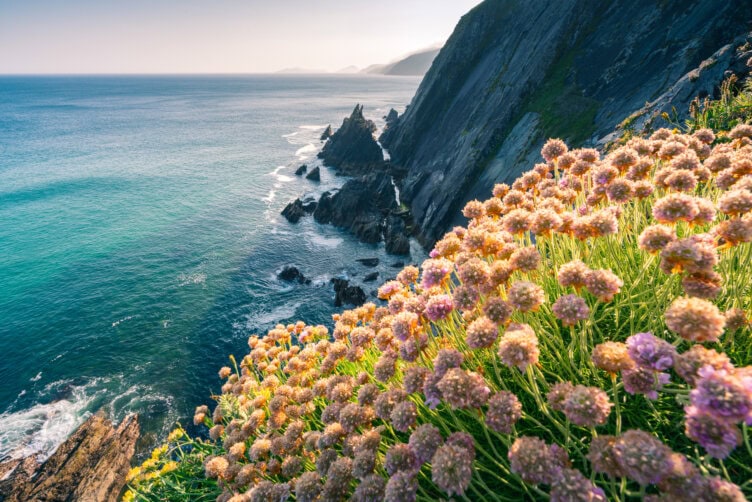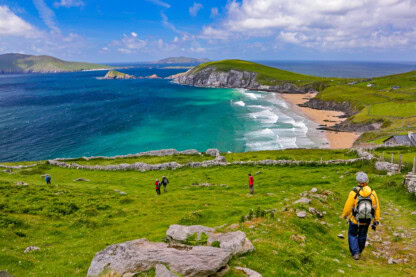
IRELAND
The Best Time to Visit Ireland
When is the Best Season to Travel to Ireland?
Other than the harsh winter months, Ireland sees prime hiking conditions for much of the year, with amazing seasonal flora and fauna events, and any sudden, short-lived shifts in weather only add to the drama of its landscapes. The Emerald Isle’s exposure to the pressure systems from the Atlantic Ocean can mean rain showers followed by brilliant blue skies. In general, from late April to early October, expect a mild climate—compared to neighboring Britain—thanks to the Gulf Stream. We time our regional adventures to the best weather and seasonal draws, from migratory birds to the summer solstice, to give you the ideal experience.


Ireland in the Spring: April & May
Why Visit Ireland in the Spring?
Our trips kick off in late April, when the coastal plains and lush islands erupt in colorful wildflowers. Migratory birds and other wildlife are on full display, and the weather is warming up, yet still crisp. Visiting Ireland in April and May also means having much of these beautiful landscapes to yourself—even the Cliffs of Moher, Aran Islands, and Dingle Peninsula are mostly quiet these months.
What to Expect on Our Spring Tours
Discover landscapes of violets, bright bluebells, and white wild garlic, especially in Killarney National Park (see Spirit of Ireland); fluffy lambs filling pastures on idyllic Clare Island (see Treasures of Ireland’s West Coast); and empty scenes at the popular geological wonder of Giant’s Causeway (see A Northern Arc Across Ireland).

Ireland in the Summer: June, July & August
Why Visit Ireland in the Summer?
In summer, abundant sunshine and cool ocean breezes make for excellent hiking and temperatures hover in the high 50s and low 60s. While many of Ireland’s top sites and cities will see bigger crowds, with the help of our local Trip Leaders, we’re able to offer seclusion at the most popular stops, from our ‘secret’ route along the Cliffs of Moher to hiking a community-owned trail on Sheep’s Head Way.
What to Expect on Our Summer Tours
On the longest day of the year in Ireland, the summer solstice, the sun rises just after 5:00 am and sets after 10:00 pm. We mark this important day in Irish culture with either a sunrise or sunset hike to a sacred site, no matter the adventure you’re on! In early summer, witness the peak nesting season for huge colonies of puffins, gannets, and other seabirds on Great Blasket Island (see Spirit of Ireland) and Rathlin Island’s bird sanctuary (see A Northern Arc Across Ireland).

Ireland in the Fall: September & October
Why Visit Ireland in the Fall?
Landscapes bright with turning leaves, fewer people at popular sites, and dramatic lighting for photography are just a few of the reasons to visit Ireland in the fall. The days start to shorten, but remain clear and mild (expect temperatures in the 50s). In September and October, crowds disperse and it’s possible to have a feeling of seclusion at places like the Cliffs of Moher, Aran Islands, and Dingle Peninsula. There are many reasons that this season is a favorite of our Trip Leaders!
What to Expect on Our Fall Tours
Dramatic landscapes of bracken and heather turn a deep brown and gold come fall, which make the peaks of Connemara glow bright (see Treasures of Ireland’s West Coast). Taste the bounty of the fall harvest, on full display in West Cork, the heart of Ireland’s farm-to-table food revolution, which we’ll experience on the Spirit of Ireland trip. Experience the ‘golden hour’ light, which offers unique photography opportunities, especially at natural wonders like the soaring sea cliffs of Slieve League and the basalt columns of Giant’s Causeway (see A Northern Arc Across Ireland).




